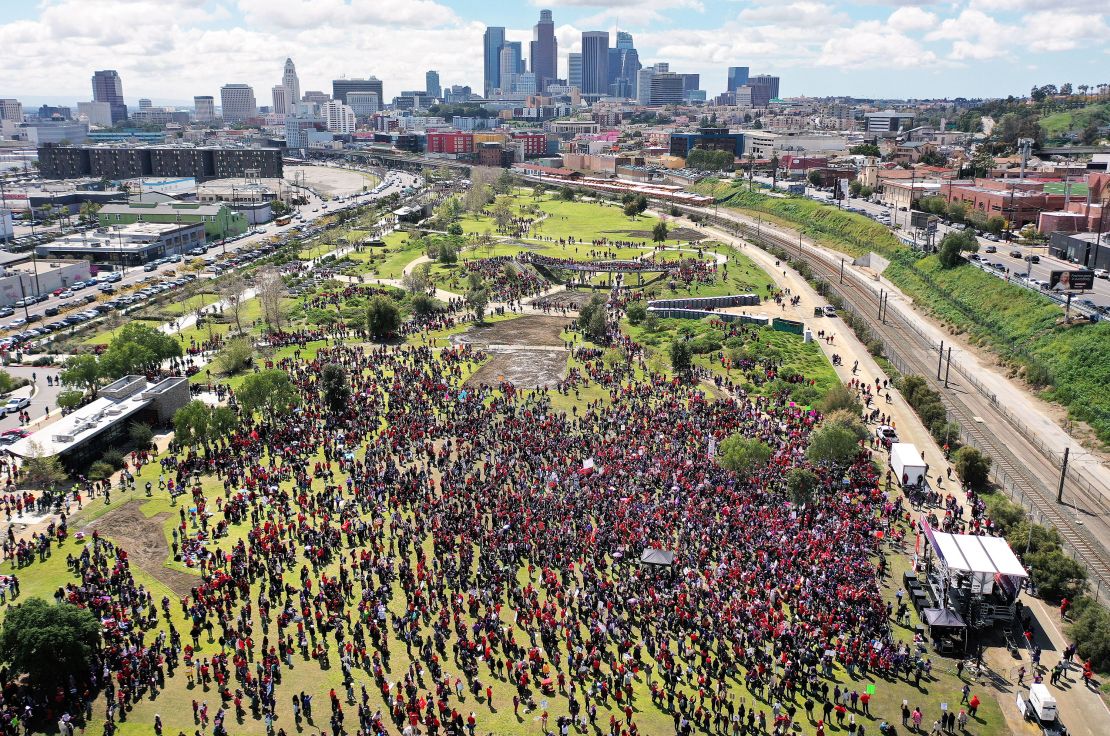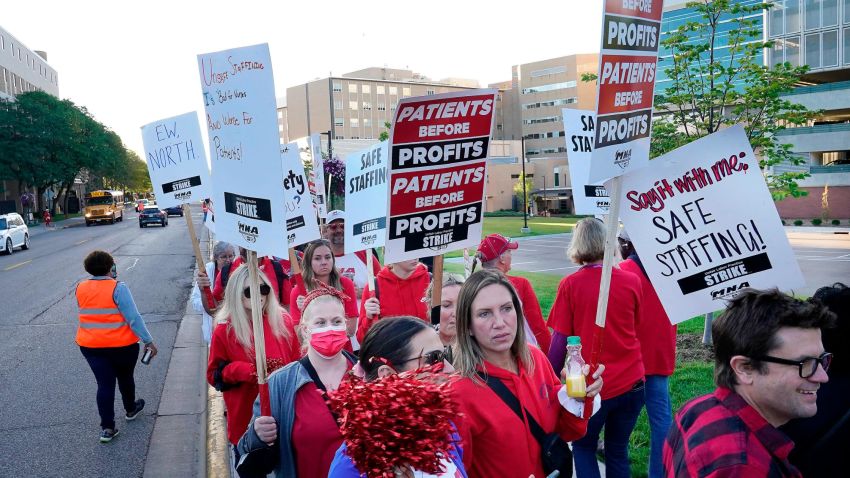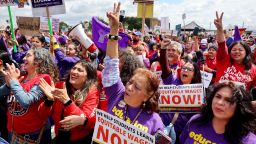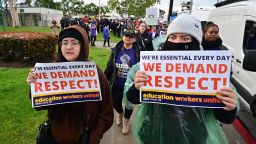The Los Angeles school strike that kept about a half-million students out of classrooms for three days this past week has ended, but that happened even before the union announced a tentative labor contract late Friday. Still, the union’s success is another sign of why short-term strikes like it are surging nationwide.
Americans typically think of a strike as one that starts with workers walking out during negotiations, and not returning to work until there’s a deal, sometimes weeks or months later, if not longer.
That wasn’t the case with the three-day strike by 30,000 school custodians, cafeteria workers, bus drivers and other student services staff who are members of Service Employees International Union Local 99 at LA schools. The union went on strike Tuesday, announcing plans to return to work on Friday no matter what happened at the bargaining table. And they were back on the job essentially a full day before the deal was announced.
The union said the deal will grant a 30% pay increase, raising the average annual pay of its members to $33,000 from $25,000, along with retroactive pay of between $4,000 to $8,000 per worker.
“The agreement addresses our key demands and sets us on a clear pathway to improving our livelihoods and securing the staffing we need to improve student services,” said a statement from the union. “It was members’ dedication to winning respect from the District that made this agreement possible.” The LA Unified School District also issued a statement praising the agreement, which needs to be ratified by rank-and-file before it can take effect.
But technically, this was a strike to protest the school district’s labor practices, not over the state of the contract negotiations. And that’s the case of a growing number of strikes nationwide – not necessarily to win a contract immediately but to air a union’s grievances to the public, flex their muscle and thus step up pressure on management.
“Strikes of this kind are a tactical tool,” said Todd Vachon, professor of labor studies at Rutgers University. “They might be building towards a larger future action. I think a lot of activists are discovering the effectiveness of these strikes. Just a taste of a what a strike can feel like can light a fire under negotiations. I think we’re going to increasingly see these short strikes as a tool.”
Two-thirds of US strikes last year lasted less than five days, according to data from the Cornell University School of Industrial and Labor Relations, which tracks work stoppages. And nearly half lasted only one day — or less. Most of those short strikes started with both strikers and management knowing the length of the strike at the start.

Strikes lasting fewer than five days jumped 78% last year, from 158 in 2021 to 282, according to Cornell’s data. That’s roughly five strikes a week. Meanwhile, strikes lasting five days or more increased just 16% to 135.
The short-term strikes don’t necessarily get the union members what they want right away as it did in this case, said Johnnie Kallas, a Cornell PhD candidate and project director of the school’s strike database. But he said there are numerous examples of strikers getting the contract they want a few weeks or months later. He cited a fixed duration three-day strike in September by 15,000 nurses in Minnesota that led to a contract by December.
“I hesitate to say that this is a total transformation,” Kallas said. “We could see an open-ended strike of 350,000 Teamsters at UPS (UPS) later this year or at one of the Big Three automakers. But these [short, fixed duration strikes] are definitely becoming more common.”
Many short-term strikers don’t have anything to show for their walkouts, at least in the near term. Thousands of Starbucks Workers United union members have been waging a series of one-day strikes at Starbucks locations they’ve organized nationwide since last November, but the union has yet to reach a tentative labor deal for any of the more than 200 stores where it represents workers.
Sometimes the union waging the strike doesn’t have the option, at least not at that time, to have an open-ended strike.
The Los Angeles school strike this past week was what was known as an “unfair labor practice” strike to highlight what the union charges is mistreatment of its members and leaders. But it also came at a time when workers there are trying to win significantly higher wages and improved benefits.
“We’re hoping it helps (negotiations),” said Lester Garcia, government relations director for the union, said earlier this week while the strike was ongoing, ahead of Friday’s tentative labor deal. But he said a strike to try to achieve a better contract is not allowed under the labor law covering public school employees in California at this stage of the negotiations. However, Garcia said the strike was drawing attention to the low pay his members receive and other demands.
“Most people don’t think about our members when they think about a school. They think about teachers or principals, not custodians or food service workers,” he said. “This attention helps our members by bringing them dignity and respect.”
And it also limits the costs of lost wages to the strikers. Workers on strike sometimes receive strike benefits but they’re not eligible for unemployment benefits from their state.
“The less days of work you lose, the better,” Garcia said. “But make no mistake, three days of lost pay may not sound like a lot. But if you’re making $14,000 a year and living paycheck to paycheck to paycheck, a three-day strike is making a sacrifice.”


























